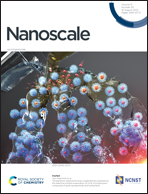TiO2-coated MoP/phosphorus doped carbon nanorods for ultralong-life sodium ion batteries with high capacity†
Abstract
How to green synthesize and construct MoP anode electrode materials with advanced structures for sodium-ion batteries still faces great challenges. Herein, a TiO2-coated MoP/phosphorus doped carbon (MoP@TiO2/P–C) nanorod with a new structure is constructed using TiO2-coated Mo-MOF as the precursor through an in situ topological conversion technique. In the synthesis process, the traditional highly toxic PH3 phosphorus is avoided. TEM results reveal that TiO2 nanoparticles are distributed at the interface between the MoP core and the P-doped carbon shell, which breaks the density of the carbon layer and facilitates ion transport. The GITT results demonstrate the fact that the diffusion coefficient of sodium ions is remarkably improved by two orders of magnitude due to the presence of TiO2. Notably, TiO2 can effectively cushion volume expansion with an almost negligible rate of 13%, allowing cells to manifest a high discharge capacity of 419 mA h g−1 at 0.5 A g−1 current density and exceptional stability where the specific capacity remains constant for 10 000 cycles at a high density of 10 A g−1 (∼81 seconds for one charging). The results indicate that MoP@TiO2/P–C possesses promising capabilities as an anode substance for SIBs. This also establishes a foundation for future investigations and practical use of this material in the field.



 Please wait while we load your content...
Please wait while we load your content...